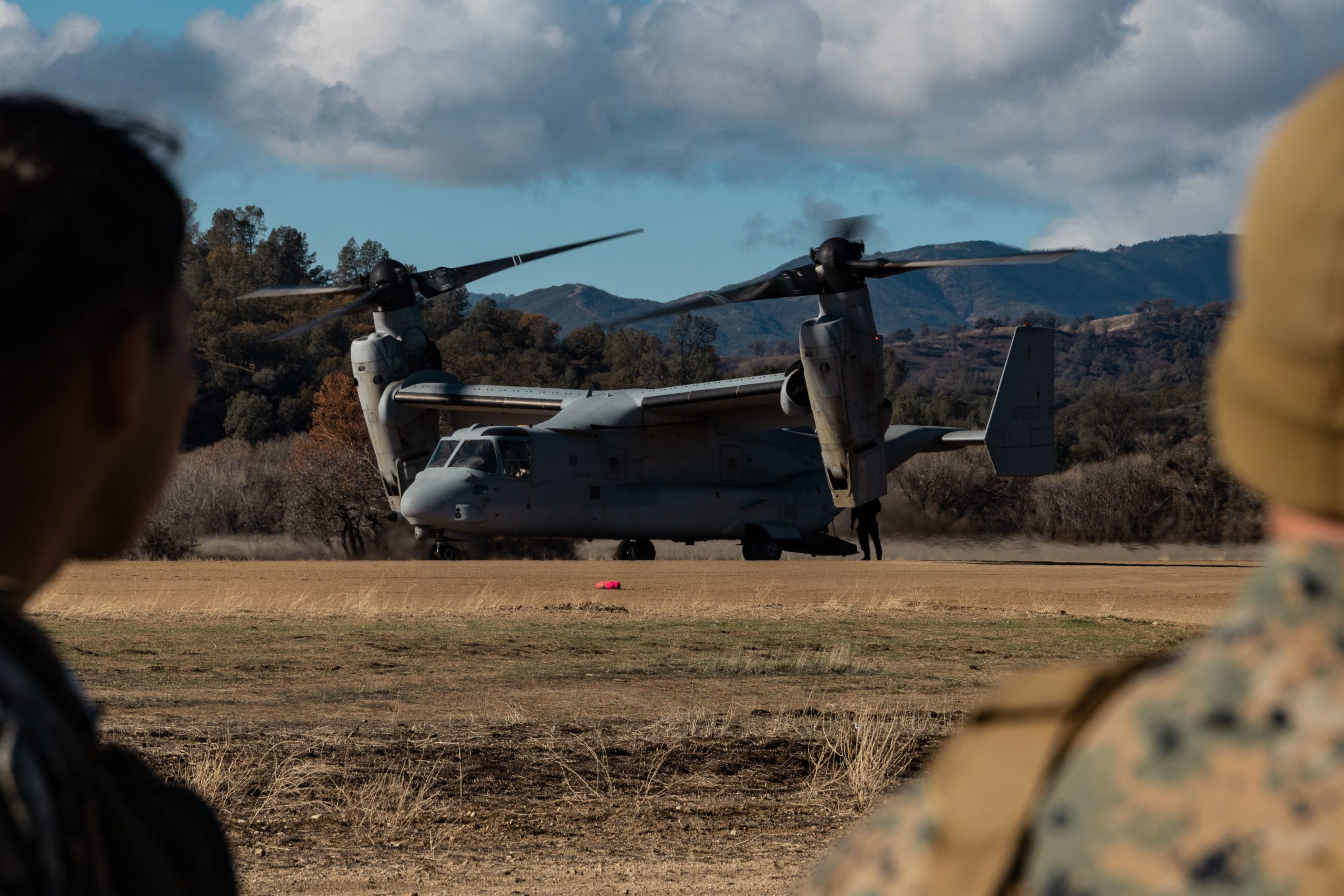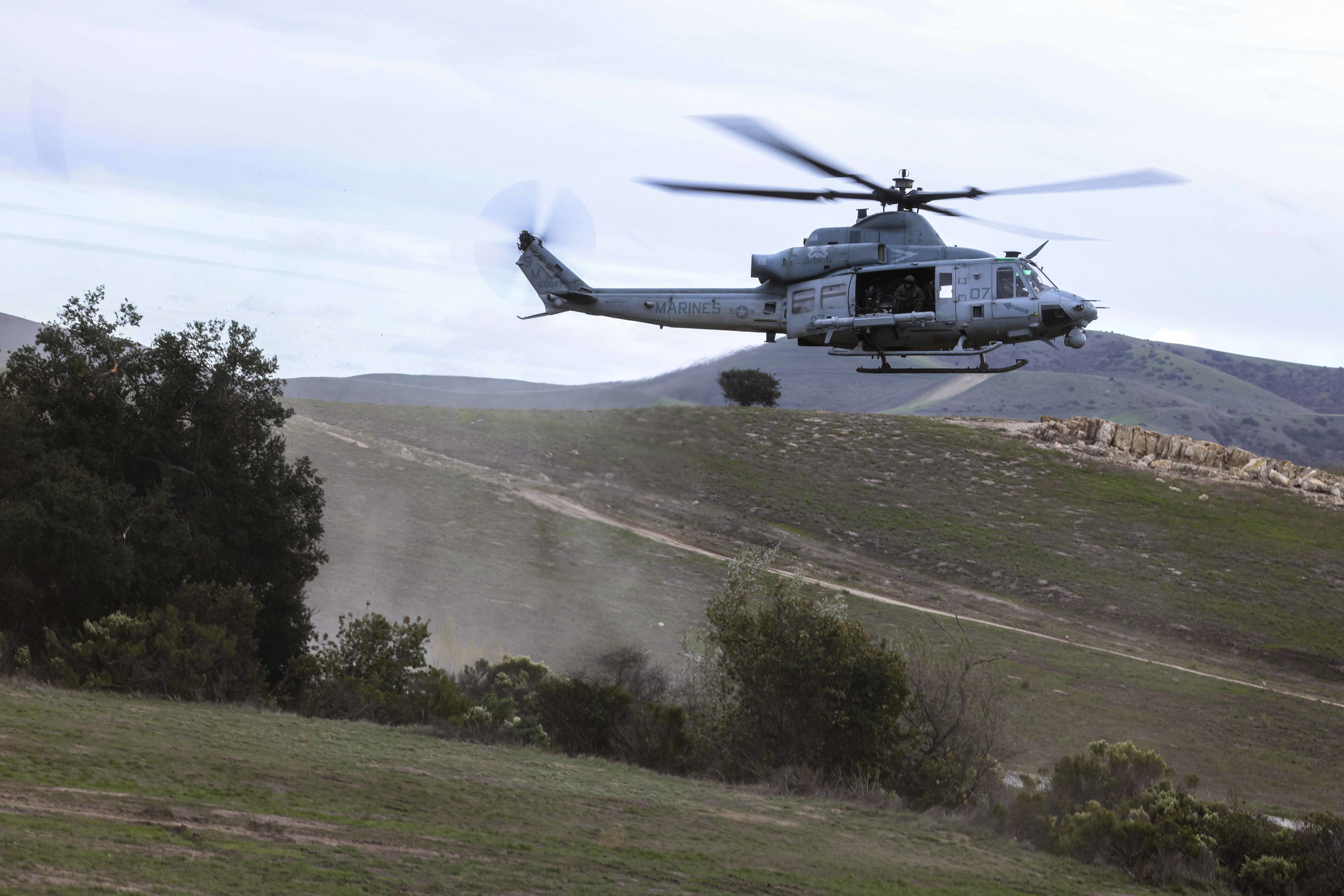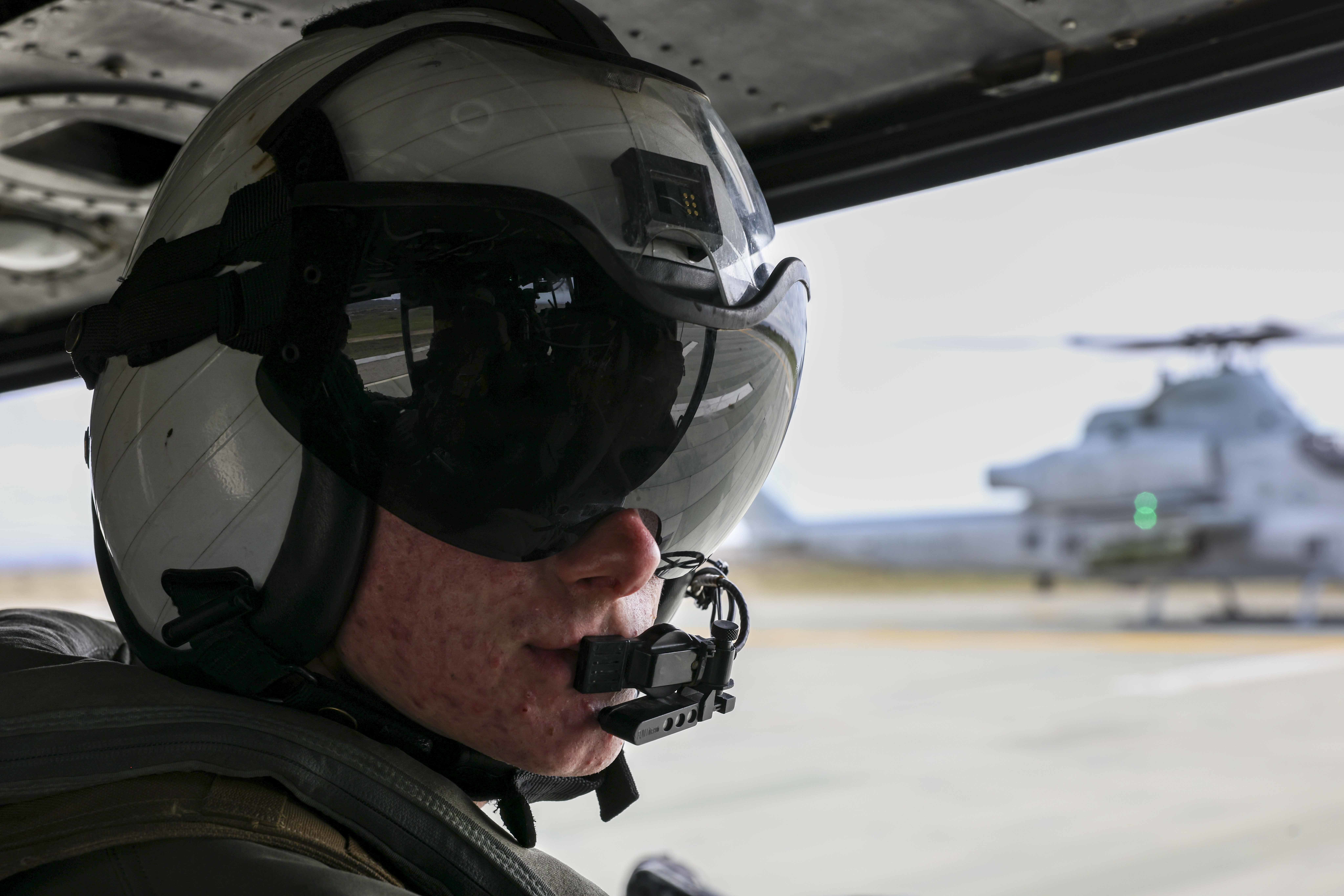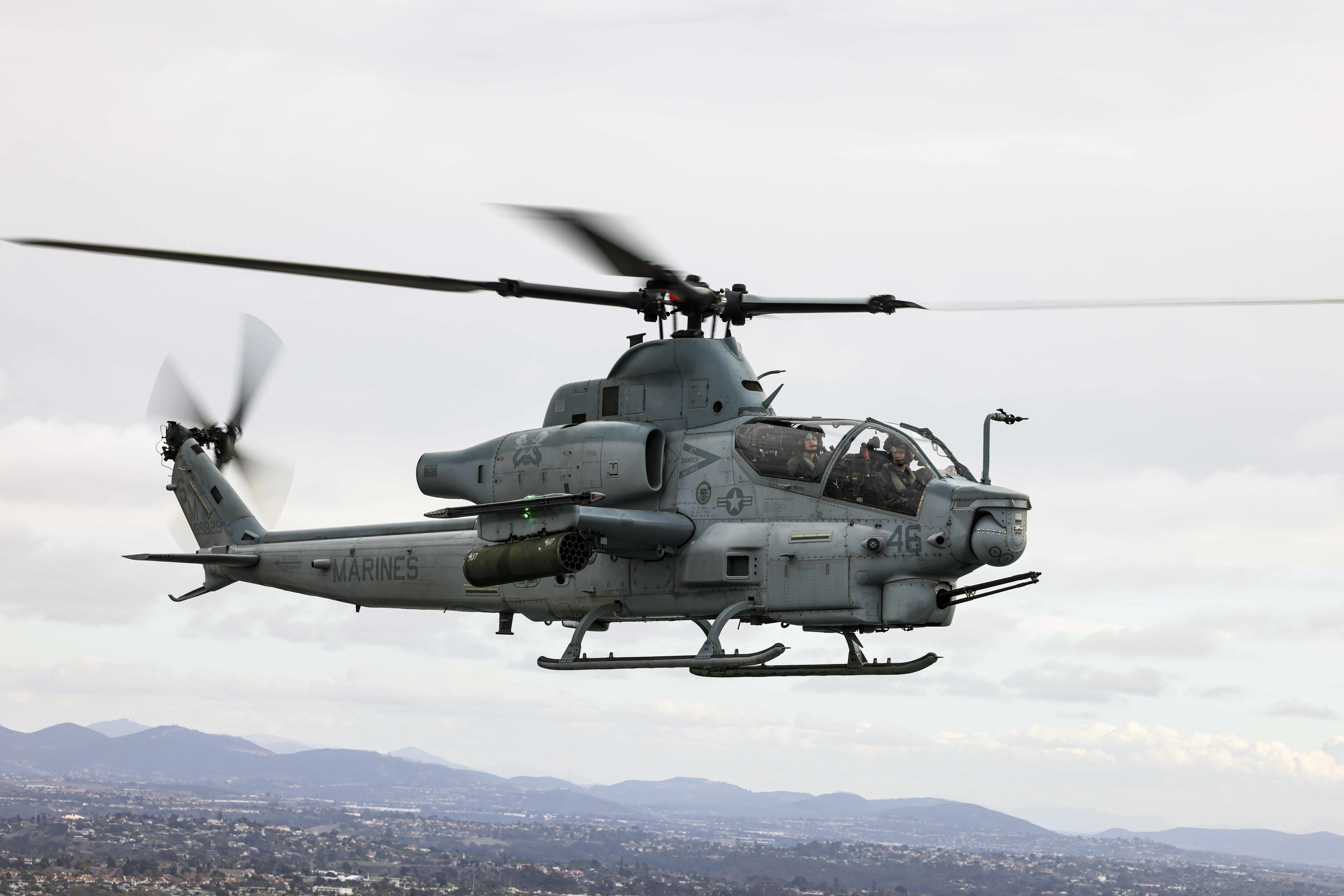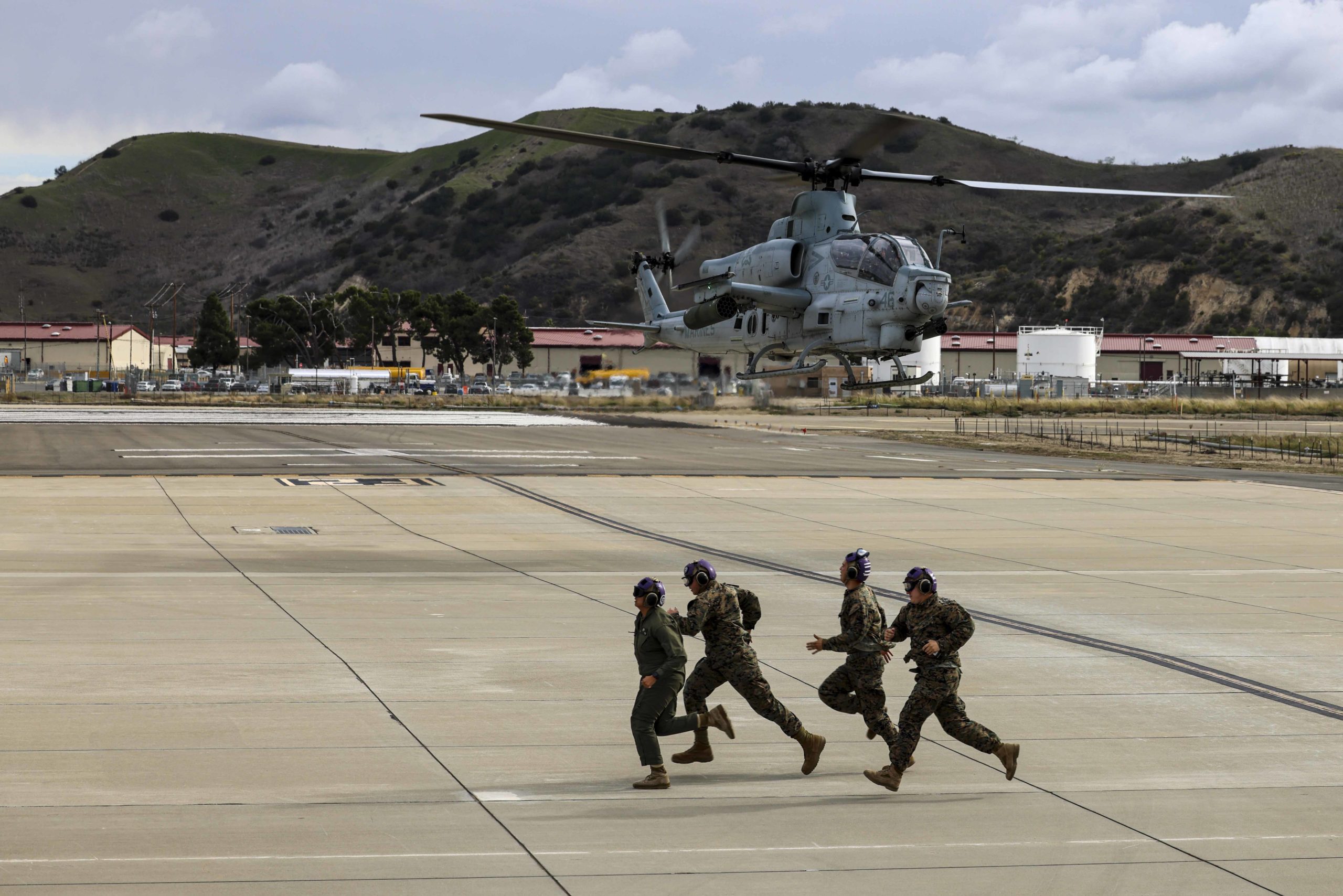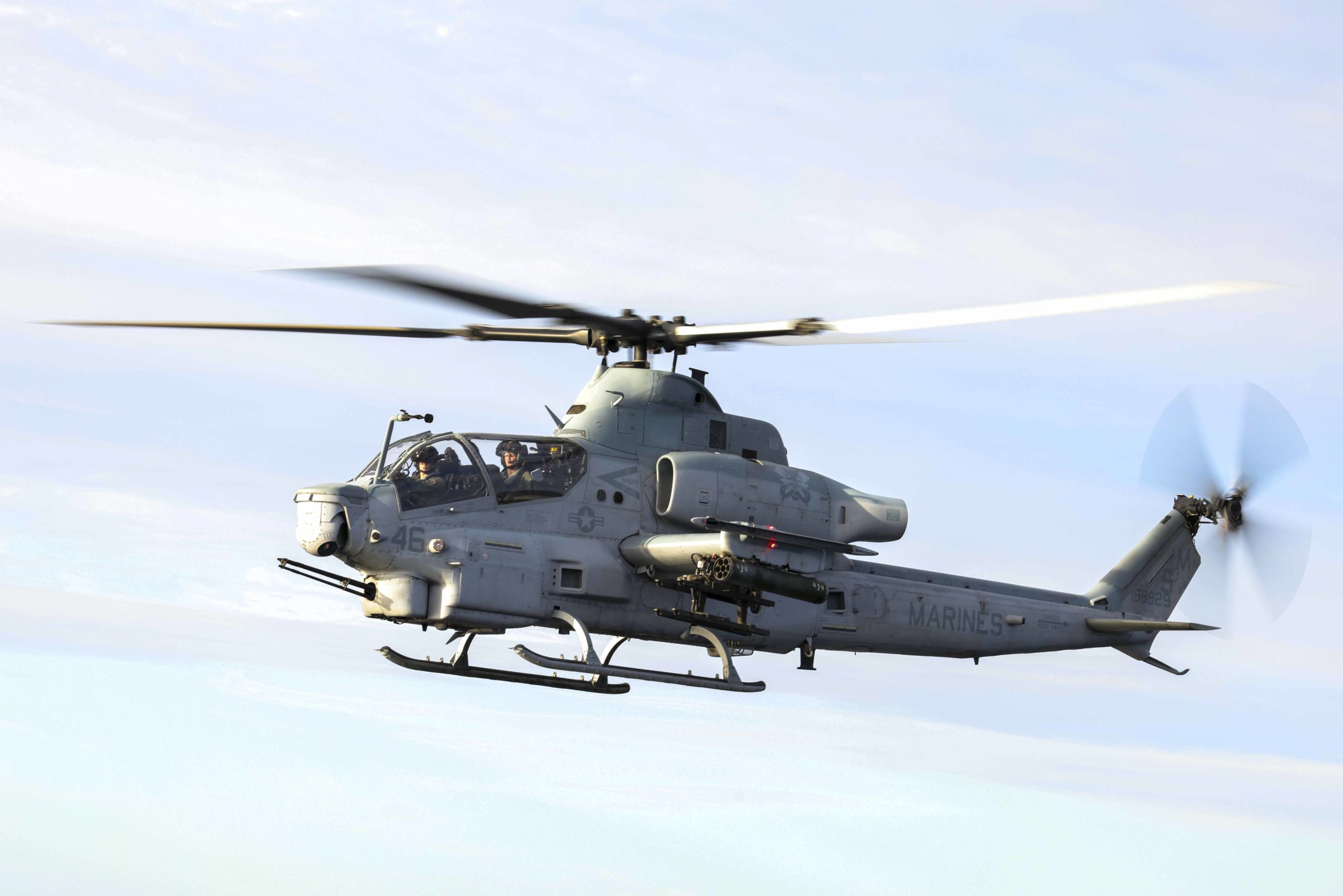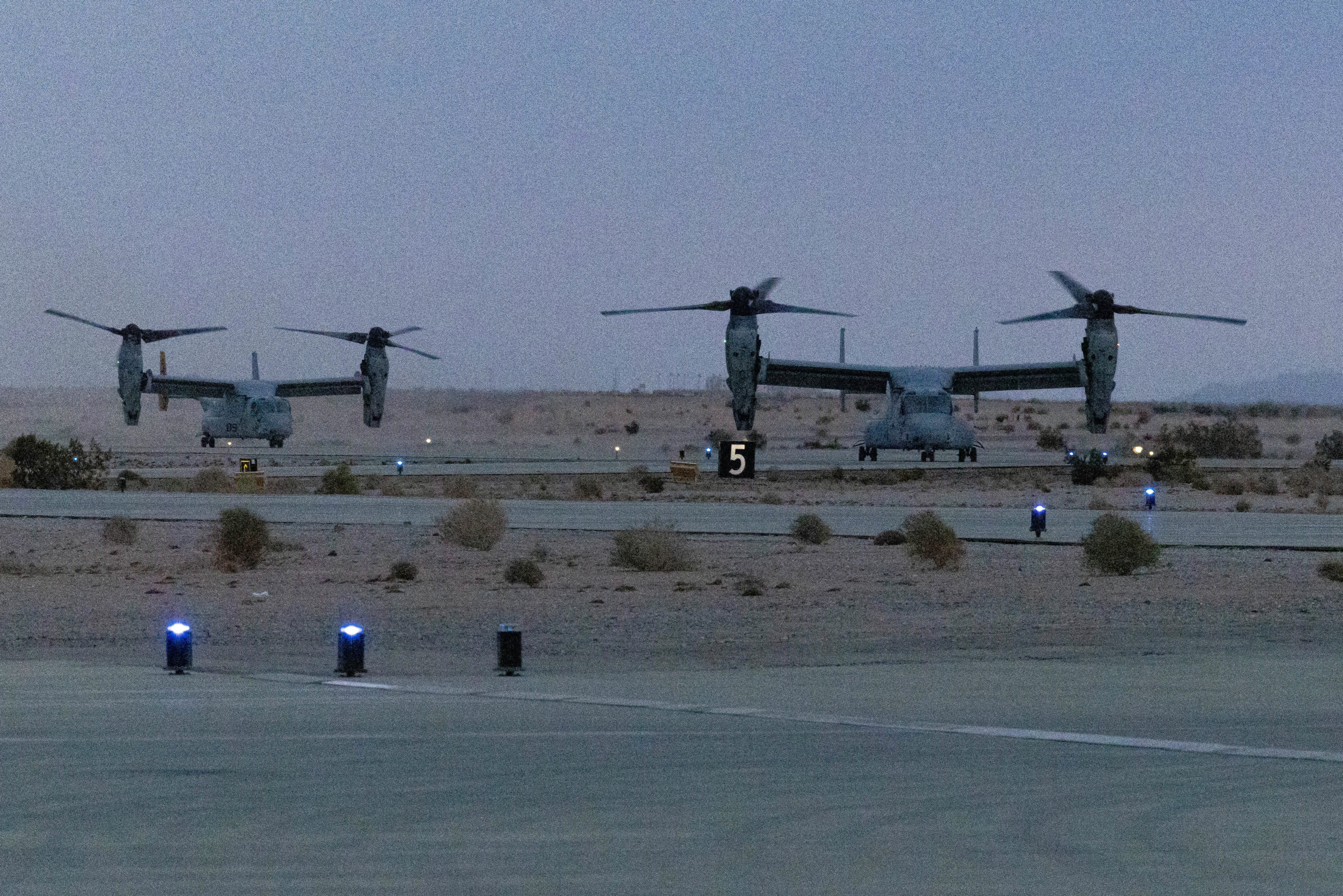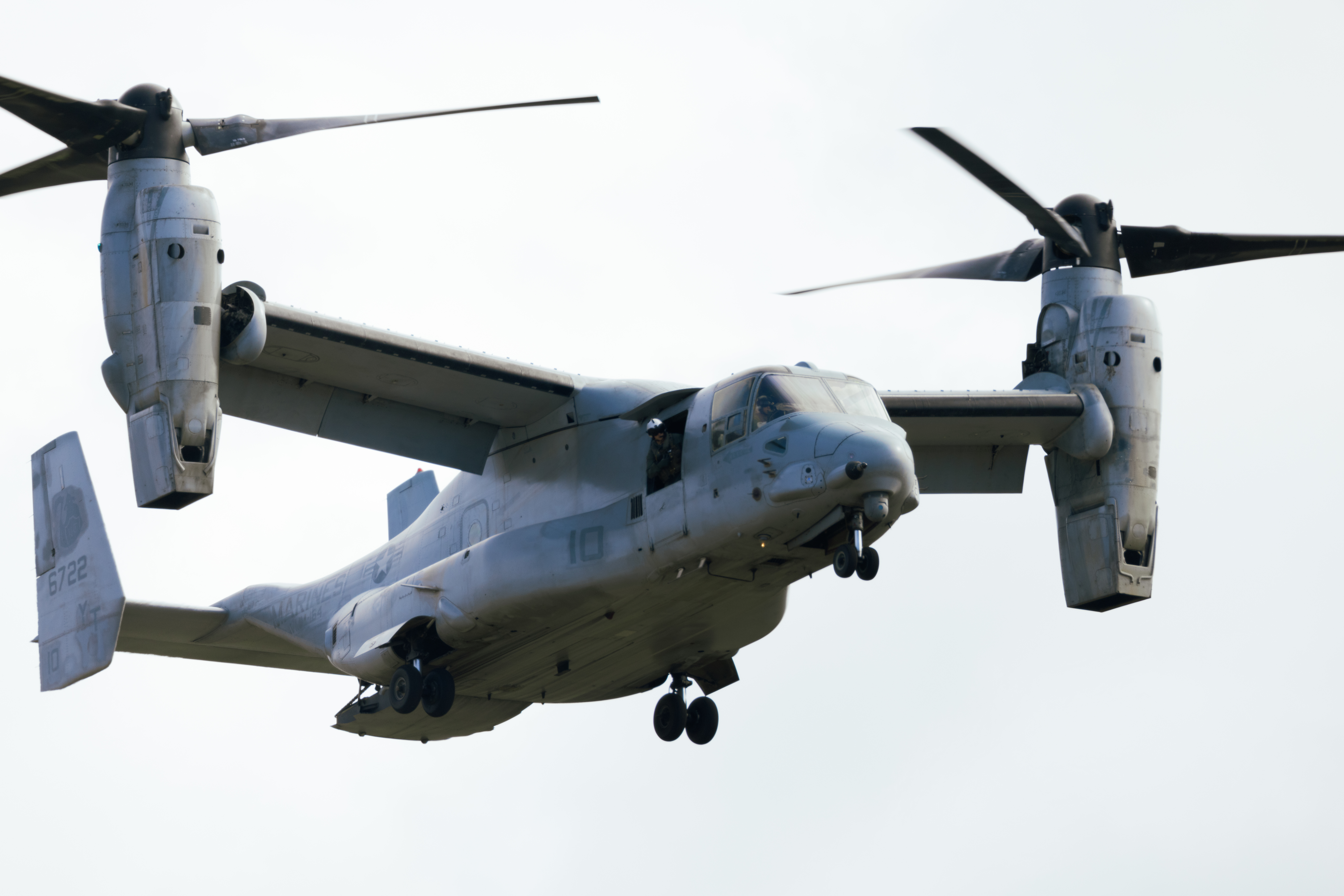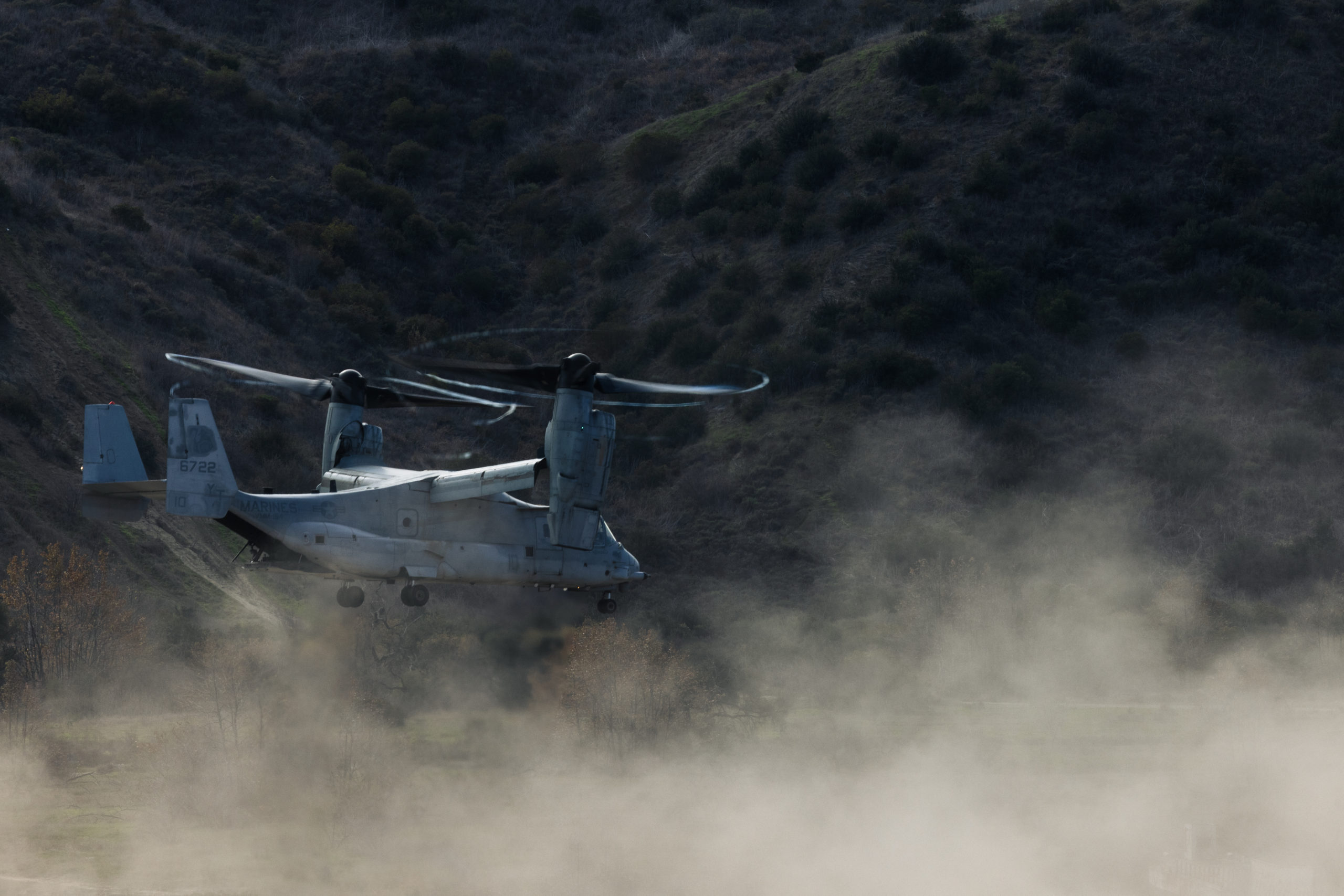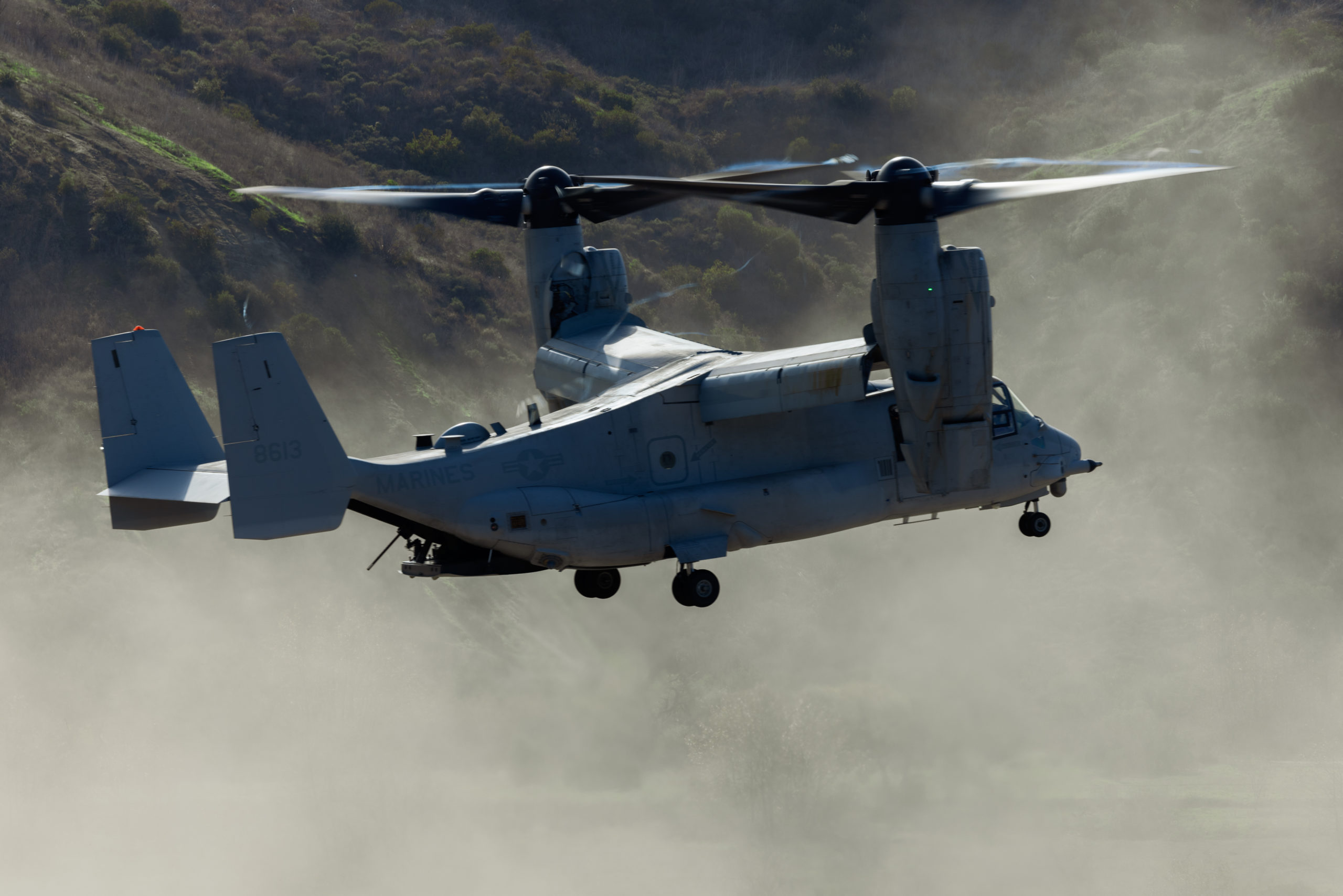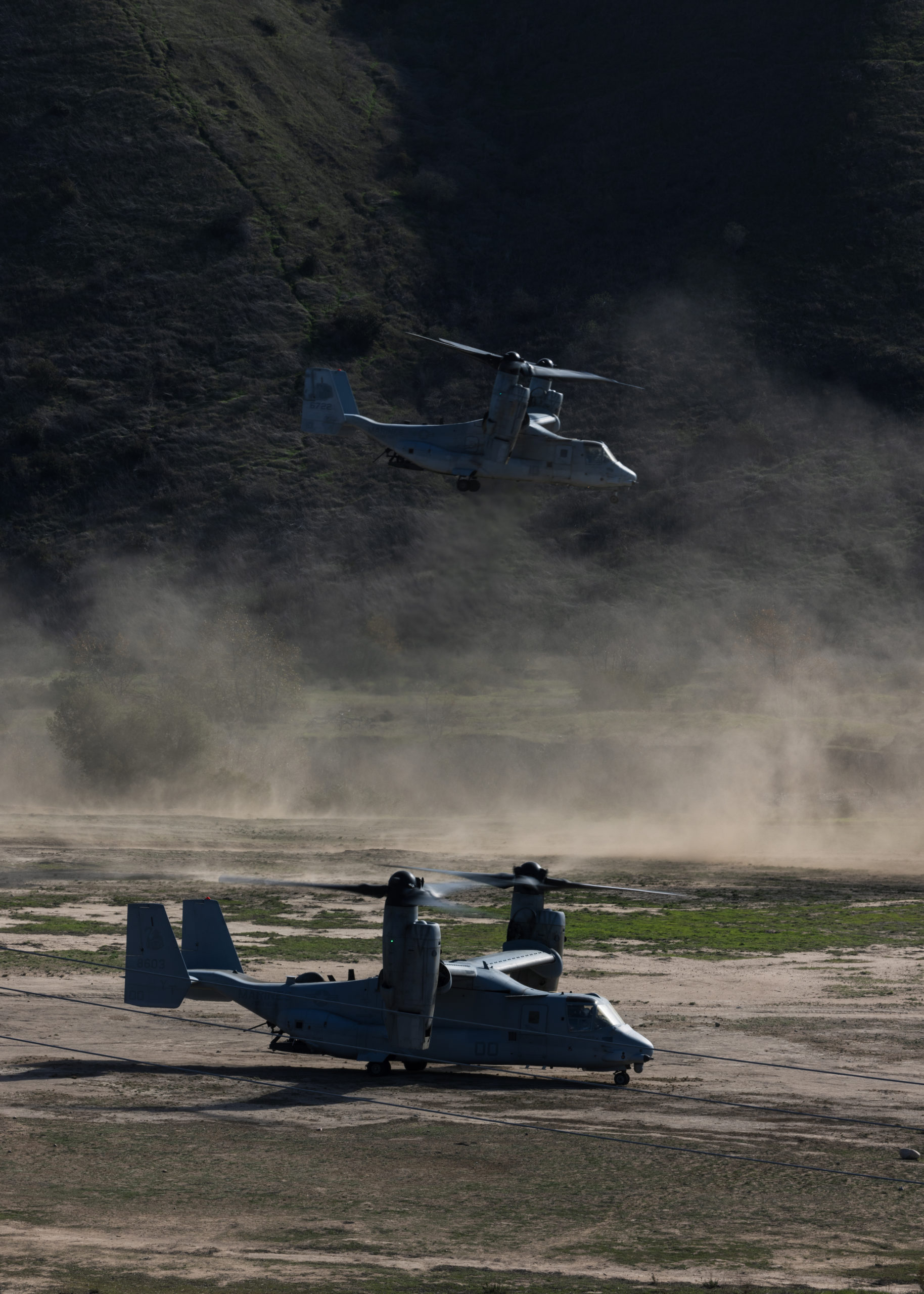By Robbin Laird
I first encountered the Osprey in 2007 in a visit to MAG-26 at New River. In that discussion with Marines, we focused on how what was referred to me early on, as the Osprey Nation, was stood up and shaped a core group of combat warriors who brought such an innovative plane into combat and reshaped really how the Marines have operated since then.
For the nascent Osprey Nation, the Osprey functioned largely as an assault aircraft in Iraq and Afghanistan but unique roles which the aircraft would play in providing greater range and speed for the medical mission quickly became appreciated.
But as Marine Corps Aviation moves to incorporate a new function which might be bundled with the Navy’s focus on distributed maritime operations, the flexibility of the aircraft is being demonstrated and a much wider range of payloads being enabled by the aircraft.
In my book with Ed Timperlake on the coming of the maritime kill web, we underscore that a distributed force built around modular task forces highlights the payloads which the task force can deliver in terms of effects, rather than describing that task force in terms of a core platform.
The flexibility which the Osprey provides – with the USMC, the U.S. Navy and the USAF operating the aircraft – opens the aperture significantly on how one configures the aircraft to deliver what payload in which situation for which combat and deterrent effect.
To understand more about this change for the Osprey Nation, I recently talked with Colonel Marvel, the CO of MAG-39, located at Camp Pendleton (see his biography at the end of the article). Col Marvel and his team have worked closely with the CMV-22B team at North Island in the standup of the Navy’s Osprey capability.
In early January 2023, I visited, Captain Sam Bryant, Commander, Fleet Logistics Multi-Mission Wing in North Island, and he underscored the Navy’s interest in broadening the CMV-22Bs role beyond the legacy Carrier on Demand function.
As I noted in that interview: “Captain Bryant reported that the U.S. Pacific Fleet Commander, Admiral Paparo, was pleased with the initial deployments, but feels that the Osprey can do much more in its role in evolving fleet concepts of operations. The aircraft provides an important support for, but more than that, stimulant for the shift in con-ops whereby the Navy focus on distributed operations which itself is in an experimental development and growth phase and intersects with the USAF’s approach to agile combat employment. In other words, the reshaping of joint and coalition operations is underway which focuses upon distributed task forces which can deliver enhanced lethality and survivability.”
Col Marvel underscored that expanding the mission set for the Navy’s CMV-22B was certainly possible but was not in his domain of responsibility. But the USMC is clearly expanding the payloads carried by the MV-22B which supports distributed operations, and if the three services which operate the aircraft found ways to expand their ability to cross-service each other’s aircraft, they would be able to enhance such operations.
As Col Marvel put it: “The Osprey provides unique speed and range combinations with an aircraft which can land vertically. It is a very flexible aircraft which could be described as a mission-kitable aircraft. The Osprey has big hollow space in the rear of the aircraft that can hold a variety of mission kits dependent on the mission which you want the aircraft to support.”
He emphasized that with a variety of roll-on roll-off capabilities with different payloads. “We can add the specialists in the use of a particular payload along with the payload itself to operate that payload, whether kinetic or non-kinetic, whether it is a passive or active sensor payload. We need to stop thinking about having to put the command of such payloads under the glass in the cockpit, and control those payloads with a tablet.”
Col Marvel underscored that the Marines when deployed are engaged in presence missions. How then best to use their presence to deliver the desired effect? And given the Marines are operating across the spectrum of warfare, and that spectrum itself is changing, which payloads are most relevant to the mission? This means that “we need to maximize the payload utility of our platforms.”
He provided a number of examples of different payloads which they are working with from USVs to a variety of passive and active sensors. Kill webs need to be sustained and Ospreys can provide both fuel and ordinance to platforms throughout the extended battlespace. For example, Ospreys can bring fuel and ordinance to a FARP (forward arming and refueling point) and support P-8 operations, for example.
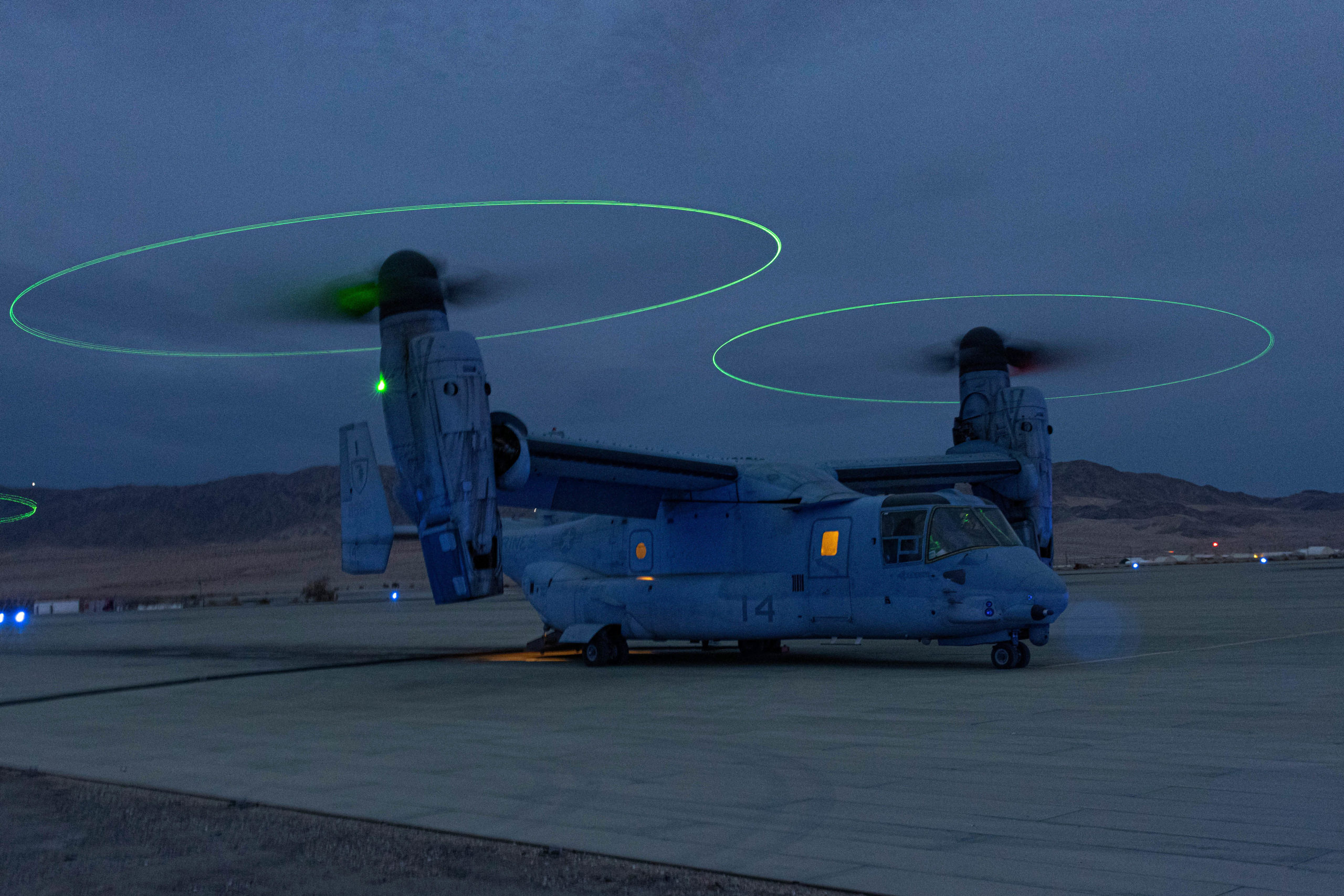
Ospreys can palatize torpedoes and engage them in the battlespace. They can provide key parts of the network of sensors that make a distributed forces’ domain C2 and fires control picture. With the proper payload, Ospreys can maintain contact with surface and subsurface forces to help build a common tactical operating picture.
The Navy with the USMC are doing a wide range of mission rehearsal experimentation to determine how best to operate a variety of payloads operating off of various platforms to enable the distributed force to have the kind of effect – kinetic or non-kinetic – which is desired. The Osprey – with its range, speed, and landing flexibility – can play a key role in this overall effort.
One example of the kind of experimentation which Col Marvel was talking about was highlighted in a 3 January 2023 story released by 3rd Marine Aircraft Wing.
This story highlighted actions by Marine Air Control Group 38 in Exercise Steel Knight 2023.
“Marines and Sailors with Marine Air Control Group 38 refined tactics for future maritime conflicts in the Indo-Pacific region during Exercise Steel Knight 2023. With units positioned across California and Arizona, MACG-38 tested components of Aviation Command and Control in conjunction with 3rd Marine Aircraft Wing’s “Hub, Spoke and Node” model in preparation for the next fight.
“Acting as the “Hub,” MACG-38 established a Tactical Air Command Center aboard Marine Corps Base Camp Pendleton, San Diego, California. With the TACC fully operational, MACG-38, in conjunction with 3rd MAW key leaders, facilitated command and control of air assets throughout the battlespace.
“Concurrently, MACG-38 set up a “Spoke” at the Strategic Expeditionary Landing Field at the Marine Corps Air Ground Combat Center located in 29 Palms, Ca in order to facilitate Marine Aircraft Group 16’s Assault Support requirements for Steel Knight 23. From the SELF, Marines from MACG-38 were able to establish Forward Arming and Refueling Points in conjunction with MV-22B Ospreys and CH-53E Super Stallions from MAG-16. From these remote locations, MACG-38 Marines were able to support the refueling of both MAG-16 aircraft and tactical air platforms including the F-35B Lightning II from MAG-13.
“Off the coast of San Diego on San Clemente Island, MACG-38 also imbedded a platoon of Marines from 3d Low Altitude Air Defense Battalion with the 11th Marine Regiment in order to earn certification for the upcoming Marine Rotational Force-Darwin deployment to Australia. While on San Clemente Island, LAAD Marines provided critical support for a large-scale Air Assault. During the exercise, LAAD gunners executed over a dozen live-fire shoots and earned their certification for MRF-D.
“Steel Knight 23 also saw the establishment of organic Air Control Companies within 3rd MAW. In order to experiment with and force generate Multifunction Air Operations Centers without impact to global force management tasking, MACG-38 transferred personnel and equipment from MACS-1 Air Defense Company Bravo to MASS-3 in order to reorganize Marine Air Support Squadron 3 into three Air Control Companies and a Headquarters Company. Under this new construct, MASS-3 was both able to support all I Marine Expeditionary Force and 3rd MAW C2 functionalities and requirements over a broader spectrum by capturing MAOC personnel and equipment requirements, techniques, tactics, and procedures, and training requirements. This initiative led to the Initial Operational Capability of MASS-3 Air Control Companies as well as the MAOC force generation event supporting 1st Marine Regiment’s MRF-D deployment.”
In short, as Col Marvel underscored: “there’s a lot of capability that we have now. And our fight is today; today is our last day of peace out in the fleet.”
COLONEL NATHAN S. MARVEL
Col Nathan S. Marvel was born and raised in Northwest Montana. He enlisted in the Navy in 1992 and attended the Broadened Opportunity Officer Selection Training program (BOOST) in San Diego, California. In 1994 he accepted an appointment to the United States Naval Academy. He graduated with a Bachelor of Science in Systems Engineering in 1998 and was commissioned a Second Lieutenant in the United States Marine Corps.
After completing The Basic School, he reported for flight training at Naval Air Station (NAS) Pensacola, Florida and NAS Corpus Christi, Texas. He was designated a Naval Aviator on 20 December 2000 and reported to Marine Corps Air Station (MCAS) Camp Pendleton, CA for instruction as an AH-1W Super Cobra pilot at Marine Helicopter Training Squadron 303 (HMT-303).
In June 2001, Col Marvel reported to the “Gunfighters” of Marine Light Attack Helicopter Squadron 369 (HMLA-369) where he served as the ground training officer, operations schedule writer, current operations officer, adjutant, future operations officer, logistics officer, tactics officer, and squadron Weapons and Tactics Instructor (WTI).
Col Marvel deployed in June 2002 to Okinawa, Japan as part of the Unit Deployment Program (UDP). Traveling from Okinawa on the High-Speed Vessel (HSV), he supported operations in the Northern Mariana Islands, the Republic of the Philippines, and the Kingdom of Thailand.
In April of 2003, Col Marvel deployed to Ali Al Salem Air Base, Kuwait in support of Operation IRAQI FREEDOM.
Shortly after his return he was deployed a second time to Okinawa Japan in 2004 where he participated in operations in the Republic of South Korea and Thailand. Col Marvel attended the Weapons and Tactics Instructor (WTI) Course in March of 2005. In July 2005 he deployed with Medium Marine Helicopter 163 (reinforced) (HMM-163(REIN)) “Evil Eyes”, 13th Marine Expeditionary Unit (Special Operations Capable) ((MEU)(SOC)), Expeditionary Strike Group One (ESG-1) in support of Operation IRAQI FREEDOM. Upon return, he joined the “Stingers” of HMLA-267 where he served as the Aviation Safety Officer.
Col Marvel then reported to Marine Aviation Weapons and Tactics Squadron One (MAWTS-1) where he served as an AH-1W Instructor, USMC Assault Support Survivability Subject Matter Expert, AH-1W/Z Course Catalog Manager, AH-1W/Z T&R Program Manager and the Academic Department Head. After completing his tour in June 2010 Col Marvel reported to Command and Staff College, MCU, Quantico, Virginia and received a Master’s degree in Military Studies.
In June of 2011, Col Marvel reported to Marine Air Group 39 (MAG-39) and was assigned to HMLA-469 as the Tactics Officer and subsequently the Assistant Operations Officer. In February of 2012, he became the Operations Officer and in April deployed to Camp Leatherneck Afghanistan in support of Operation ENDURING FREEDOM 12.1 & 12.2. Col Marvel completed his tour in HMLA-469 “Vengeance” as the Executive Officer.
Col Marvel reported to HQMC Aviation, Pentagon, Washington D.C. in the Summer of 2014 and served as the Requirements Officer (RO), Aviation Programs and Weapons (APW-74) for Digital Interoperability (DI), Electronic Kneeboard (EKB) and Joint Mission Planning Software (JMPS). In the summer of 2015, he returned to MAG-39 and began his conversion to the AH-1Z Viper.
In December of 2015, Col Marvel assumed Command of HMLA-369 the “Gunfighters”.
Upon completion of command, Col Marvel reported to the National War College in June of 2017 and received a Master’s degree in National Security Strategy. From June 2018 until December 2020 Col Marvel served as a Special Assistant to the Director and Marine Corps Operational Liaison at the Defense Advanced Research Projects Agency (DARPA) in Arlington Virginia.
Featured Photo: U.S. Marines with Marine Aircraft Group 39, 3rd Marine Aircraft Wing (MAW), guide the arrival of a MV-22B Osprey over radio during flight operations as part of Steel Knight 23 on Fort Hunter Liggett, Dec. 7, 2022. Exercise Steel Knight 23 provides 3d MAW an opportunity to refine Wing-level warfighting in support of I Marine Expeditionary Force and fleet maneuver. (U.S. Marine Corps photo by Lance Cpl. Shannon Gibson).


